
Burkina Faso is a landlocked country in West Africa with an area of 274,223 km2 (105,878 sq mi), bordered by Mali to the northwest, Niger to the northeast, Benin to the southeast, Togo and Ghana to the south, and Ivory Coast to the southwest. As of 2021, the country had an estimated population of 20,321,378. Previously called Republic of Upper Volta (1958–1984), it was renamed Burkina Faso by President Thomas Sankara. Its citizens are known as Burkinabè, and its capital and largest city is Ouagadougou. Its name is often translated into English as the "Land of Honest Men".
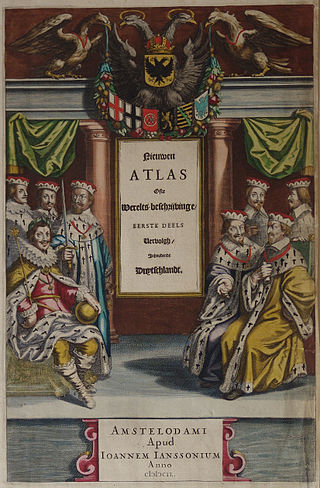
Johannes Janssonius was a Dutch cartographer and publisher who lived and worked in Amsterdam in the 17th century.
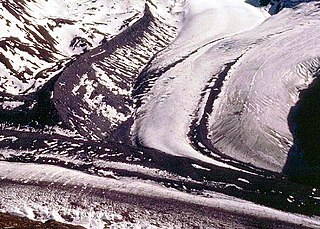
Glaciology is the scientific study of glaciers, or more generally ice and natural phenomena that involve ice.

The Atlas of Middle-earth by Karen Wynn Fonstad is an atlas of J. R. R. Tolkien's fictional realm of Middle-earth. It was published in 1981, following Tolkien's major works The Hobbit, The Lord of the Rings, and The Silmarillion. It provides many maps at different levels of detail, from whole lands to cities and individual buildings, and of major events like the Battle of the Pelennor Fields. The maps are grouped by period, namely the First, Second, and Third Ages of Middle-earth, with chapters on The Hobbit and The Lord of the Rings. A final chapter looks at geographic themes such as climate, vegetation, population, and languages around Middle-earth.

Augustus Heinrich Petermann was a German cartographer.
Collins Bartholomew, formerly John Bartholomew and Son, is a long-established map publishing company originally based in Edinburgh, Scotland. It is now a subsidiary of HarperCollins.

Alexander Keith Johnston FRSE FRGS FGS FEGS LLD was a Scottish geographer and cartographer.
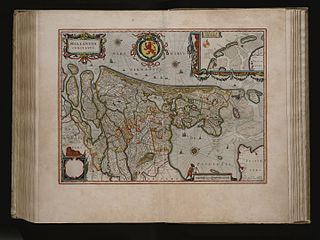
The Atlas Maior is the final version of Joan Blaeu's atlas, published in Amsterdam between 1662 and 1672, in Latin, French, Dutch, German and Spanish, containing 594 maps and around 3,000 pages of text. It was the largest and most expensive book published in the seventeenth century. Earlier, much smaller versions, titled Theatrum Orbis Terrarum, sive, Atlas Novus, were published from 1634 onwards. Like Abraham Ortelius's Theatrum Orbis Terrarum (1570), the Atlas Maior is widely considered a masterpiece of the Golden Age of Dutch/Netherlandish cartography.

The Times Atlas of World History is a historical atlas first published by Times Books Limited, then a subsidiary of Times Newspapers Ltd and later a branch of Collins Bartholomew, which is a subsidiary of HarperCollins, and which in the latest editions has changed names to become The Times Complete History of the World. The first two editions were created by Barry Winkleman, the editorial director of Times Atlases and Managing Director of Times Books. They were edited by the Oxford Chichele Professor of Modern History Geoffrey Barraclough. It contains large full color plates and commentary on each map or set of maps. Includes approximately 600 maps covering the date span of 3000 BCE to 1975. It has been revised and reprinted for many times and the latest edition is the ninth edition, published in 2015, and reflects on the modern world up to the 21st Century.

John George Bartholomew was a British cartographer and geographer. As a holder of a royal warrant, he used the title "Cartographer to the King"; for this reason he was sometimes known by the epithet "the Prince of Cartography".
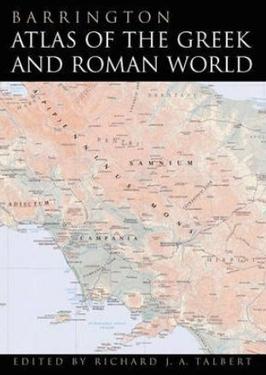
The Barrington Atlas of the Greek and Roman World is a large-format English language atlas of ancient Europe, Asia, and North Africa, edited by Richard J. A. Talbert. The time period depicted is roughly from archaic Greek civilization through Late Antiquity. The atlas was published by Princeton University Press in 2000. The book was the winner of the 2000 Association of American Publishers Award for Best Professional/Scholarly Multivolume Reference Work in the Humanities.

Joan Blaeu was a Dutch cartographer born in Alkmaar, the son of cartographer Willem Blaeu.

Uunartoq Qeqertaq (Greenlandic), Warming Island in English, is an island off the east central coast of Greenland, 550 kilometres north of the Arctic Circle. It became recognised as an island only in September 2005, by US explorer Dennis Schmitt. It was attached to the mainland of Liverpool Land by glacial ice even in 2002, when the ice shelves began retreating rapidly in this area, so that by 2005 it was no longer attached to the mainland. Members of the scientific community believe this newly discovered island is a direct result of global warming.
The Nicholson Guides are a set of books originally published by Robert Nicholson Publications, then jointly by Bartholomew and the Ordnance Survey, and now by HarperCollins, as guides to the navigable and un-navigable waterways of England and Wales.

There are 622 kilometres of 1,000 mmmetre gauge railway in Burkina Faso, which run from Kaya to the border with Côte d'Ivoire and is part of the Abidjan-Ouagadougou railway. As of June 2014, 'Sitarail' operates a passenger train three times a week along the route from Ouagadougou to Abidjan. Journey time is 43 to 48 hours.

Geographers' A–Z Map Company Ltd. is the largest independent map publisher in the United Kingdom, providing cartographic services, digital data products and paper mapping publications.
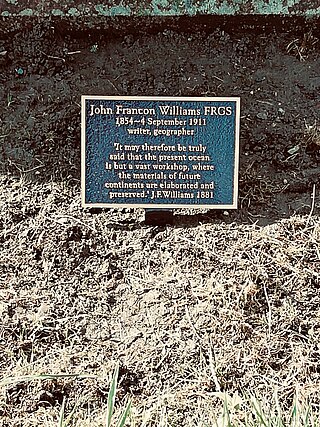
John Francon Williams was a British writer, geographer, historian, journalist, cartographer, and inventor, born in Llanllechid, Caernarvonshire. His seminal work was The Geography of the Oceans.















